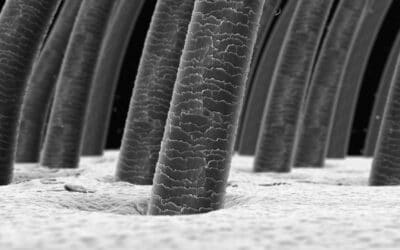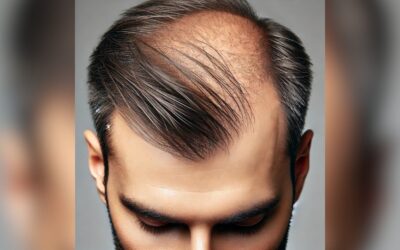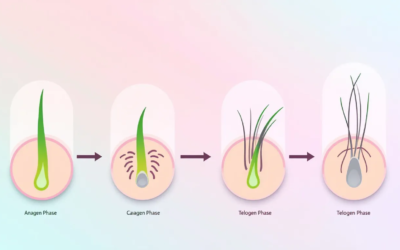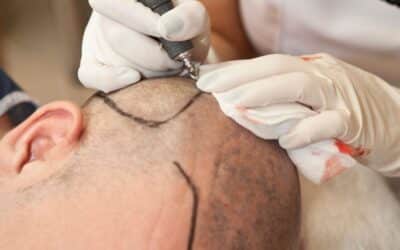Do You Need Diffuse Thinning Hair Transplant Surgery?
Diffuse thinning, hair transplant surgery is not usually the first treatment that is recommended for this condition. While it is a very common cause of hair loss, diffuse thinning is different from pattern balding. Instead of only affecting a concentrated area such as the hair surrounding the face, or the crown of the head, diffuse thinning can cause hair loss throughout the scalp. This can cause the hair to thin, and to have an almost see-through appearance in the more advanced stages.
In this article, we will discuss diffuse thinning, hair transplant surgery, and other less invasive methods of treatment. We will also discuss the different causes of diffuse thinning, ways to prevent it, and how to know whether hair transplant surgery is your best option in the long term. We’ll discuss what to do if you suspect that you are dealing with diffuse thinning and which ineffective treatments to avoid.
Who Benefits From a Diffuse Thinning Hair Transplant Procedure?
Diffuse thinning can affect both men and women. It describes a loss of hair density overall, instead of the classic horseshoe pattern that is often observed in male pattern baldness. A person experiencing diffuse thinning may notice accelerated shedding of the hair, greater space between the individual strands of hair on the scalp, or a tinner braid or ponytail when styling their hair. This can obviously be very disheartening, but in most instances, this condition is both temporary and treatable.
One of the most obvious signs that you are experiencing diffuse thinning is excessive shedding. You may notice more hair falling out in the shower, or you may find more hair in your combo or brush. You may even find more hair stuck to the shoulders of a jacket or sweater. Before you panic though, keep in mind that it is normal to shed hair on a daily basis. On average our scalp sheds about 100 strands of hair per day. By comparison, the average human head contains anywhere from 80,000 to 120,000 hair follicles.
The Natural Cycles of Hair
Hair goes through a natural cycle of growing, resting, and shedding that lasts between 2-6 years. During the Anagen, or growth phase, the hair is actively growing longer. This phase lasts between 2-6 years and 80-90 percent of one’s hair is in this stage at any given time. The Telogen or resting phase is when the hair is no longer actively growing but has not been shed yet. 10-15% of one’s hair will be in this phase at any given time. This stage usually lasts between two to three months.
Less than 5% of one’s hair is in the Catagen or transitional phase in which it is shed, at any given time. This transitional phase generally lasts around 6 weeks. Once you understand the cycle of growth for a strand of hair, it is easier to understand why shedding a small amount of hair on a regular basis is completely natural and normal. Some people literally collect and count the hairs they shed in the shower or while styling as a way to check to see whether the amount they are shedding is within a healthy range.
The Causes of Diffuse Thinning Hairloss
Telogen Effluvium Hairloss
When it comes to diffuse thinning, there are many different causes. One of the biggest culprits is known as “telogen effluvium” which is basically a fancy word for excessive shedding.
A person experiences telogen effluvium when a large number of hairs prematurely enter the telogen, or resting phase of the hair cycle leading them to fall out sooner than they normally would. Instead of 80-90% of the hair being in the growing or anagen stage, as much as 70 percent of the hairs that should be growing end this phase prematurely, and wind up being shed.
Telogen Effluvium is one of the ways that the body reacts to physiologic stresses, which can be caused by several factors. These include serious illnesses, for example, many people who had covid 19 report an increase in hair shedding after their illness. High fevers are another cause of telogen effluvium. In addition to this, infections, and major surgeries can disrupt the hair growth cycle.
Hormonal Changes & Other Diffuse Hairloss Factors
Furthermore, drastic changes in hormone levels such as during the postpartum phase after giving birth can cause increased hair loss. During pregnancy the anagen or growth stage is prolonged but about 3 months after giving birth, most women notice an increased amount of shedding. This usually resolves on its own.
Traumatic life events or prolonged periods of psychological stress can contribute to diffuse thinning as well. Other causes include thyroid imbalances, crash diets or disordered eating, nutritional deficiencies, and side effects to certain medications can all cause the body to experience telogen effluvium, leading to diffuse thinning hair.
Sometimes overexposure to heavy metals such as arsenic, mercury, thallium, lead, or cadmium can also contribute to telogen effluvium.
Combatting Diffuse Thinning Hair Loss
More often than not, diffuse thinning as a result of telogen effluvium resolves on its own. After about 3-6 months the hair’s normal hair growth cycle returns to a more balanced state. If this thinning and excessive shedding has not resolved after six months then there may be a sign that you are experiencing chronic telogen effluvium, which is a little more serious.
This condition is prevalent among middle-aged women in particular and the cause of this condition is unclear. Research suggests that it may be a confluence of factors including stress, hormonal changes, thyroid imbalances, nutritional deficiencies, etc. When it comes to nutritional deficiencies, low protein intake or iron deficiency is the most common issue. Medications especially beta-blockers, retinoids, and anticoagulants have side effects that can contribute to diffuse thinning as well.
Should You Contact a Hairloss Doctor?
If you suspect that you suffer from diffuse thinning we recommend visiting a doctor that specializes in hair loss. You may want to visit your regular doctor as well. They may be able to order tests to help determine whether hormone imbalances, low iron, or heavy metal exposure are contributing to your present condition.
They can help you determine whether any medication you may be taking is causing this diffuse thinning as a side effect as well. For example, certain birth control pills can trigger increased shedding. Knowledge is power, and this information will help you determine the healthiest and most effective treatment for you in the long term.
Female Pattern Balding
It’s worth noting as well that female pattern hair loss can also cause diffuse thinning. This is a type of pattern hair loss that causes hair loss around the hair that frames the face and at the part line. If left untreated, it can eventually affect the hair across the entire scalp.
Your doctor will be able to test to determine whether the cause of one’s thinning hair is related to pattern hair loss or telogen effluvium. Doctors are able to determine if it’s telogen effluvium by doing a hair pull test and biopsy. A complete blood count, thyrotropin tests, and other quick blood tests can also be helpful in determining whether common causes of telogen effluvium are at work.
Working On a Treatment Plan
Because the causes of diffuse thinning are diverse, the treatment plans will also vary depending on the individual. Many times a patient will employ several strategies including medication, lifestyle changes, and products that address hair loss. This is why testing to determine the root cause is so important, it will help you determine the best treatments to employ to restore balance.
Sometimes it’s simple things like adjusting your diet to include more protein and iron. Relaxation techniques such as getting regular massages, practicing meditation, or getting reiki treatments can help reduce stress. If hair thinning occurs after a major illness or surgery, something as simple as increased rest can help.
Drugs for Hair Restoration
Minoxidil, a topical hair medication that is commercially known as Rogaine is often suggested as a noninvasive treatment for diffuse thinning. It is available as either a spray liquid or foam and is applied directly to the scalp. It works by encouraging hairs to shift into the anagen or growth phase by stimulating blood flow to the scalp. This can help to promote the appearance of thicker, denser hair.
Finasteride is a prescription medication intended to treat hair loss from elevated testosterone or dihydrotestosterone (DHT) levels. DHT is thought to be the hormone responsible for male pattern baldness. DHT impacts accelerated hair loss by shrinking hair follicles on the scalp. Finasteride is very effective for hair loss that’s caused by DHT but it has not been shown to help with diffuse thinning due to telogen effluvium.
Do Shampoos Stop Diffuse Thinning?
Shampoos that claim to promote hair growth is rarely effective for treating diffuse thinning. If hair thinning occurs due to some kind of infection or imbalance in the scalp, there are shampoos that a dermatologist may prescribe to correct this issue.
However, there is little proof that hair growth shampoos are very effective. The same goes for hair growth vitamins, particularly those that boast biotin as their active ingredient, there is not any evidence that products such as these will do much to improve the growth of your hair.
Hair Transplants for Diffuse Thinning
When it comes to the question of diffuse thinning, hair transplant surgery and whether or not it is an appropriate treatment is also complicated. Not everyone that is experiencing diffuse thinning is a good candidate for a hair transplant.
If the patient lacks the hair density required to obtain enough follicular grafts to transplant into the balding areas, the transplant will wind up looking unnatural and the patient will be unhappy. If the hair follicles at the donor site are being impacted by DHT this can also exclude them from being a good candidate for hair transplant surgeries because the donor follicles will be at risk for shrinking over time.
LLLT for Diffuse Thinning
So you’re experiencing diffuse thinning, hair transplant surgery is not a good fit for you, so what do you do instead? Well, another treatment option to consider is Low-Level Laser Therapy (LLLT). LLLT was first approved by the FDA in 2007 for the purpose of treating mild to moderate hair loss. LLLT may increase cell metabolism. It also improves the health of blood vessels in the scalp. This helps the hair follicles to produce hair shafts that are thicker and more durable.
It also stimulates the sebaceous glands, giving the hair a smoother and shinier appearance. On top of that it boosts melanin production, which can darken the pigment in grey hair. Whether used independently or in conjunction with other treatments such as hair transplant surgery, LLLT may improve outcomes in patients experiencing hair loss.
Finding Quality LLLT Devices
Not all LLLT devices are of the same quality. The only devices worth spending your money on are laser caps prescribed by a doctor that contain prescription-grade laser diodes. There are many products that contain weak laser diodes or LED lights that are ineffective. At Best Hair Transplant in Los Angeles, we offer our patients the Capillus82, Capillus202, CapillusPro (formerly the Capillus272 Pro), and Capillus312.
All of these devices have received a 510(k) clearance from the FDA. This is an important premarket notification made to the FDA to demonstrate that this device is safe and effective, based on clinical studies that demonstrate its efficacy.
A 510(k) is a premarket notification made to FDA to demonstrate that a device is safe and effective. For a medical device to be legally marketed in the United States, it must receive clearance from the Food & Drug Administration.
Clearance is based on an application by the manufacturer of the device to the FDA. This application may include clinical studies that prove efficacy, as well as safety information, and other evidence showing that the device proves safe and effective for its intended use. It is important to be aware of this distinction.
Many devices on the market are not granted this level of clearance. Therefore, assume they are potentially risky for use.
Now You Understand About Diffuse Thinning Hair Transplants & How You Might Benefit
We know that all this information can be complicated to understand. If you have more questions about diffuse thinning, hair transplant surgery, low-level laser therapy, and other treatment options, contact Best Hair Transplant today.
We offer complimentary consultations so that you can discuss all your questions and concerns with us. This helps determine if you are a good candidate for diffuse thinning hair restoration surgery. We believe in educating our patients about the causes and solutions to diffuse thinning. That way you make empowered, well-informed decisions. If you would like to learn more, contact our office today!
Interested in Learning More About a Diffuse Thinning Hair Transplant?
Best Hair Transplant is the best place to schedule your diffuse thinning hair transplant in Los Angeles. We’ve helped both men and women regrow their lost hair. But don’t take our word for it. We suggest learning as much as possible about hair restoration. Do so prior to making a decision on how to address your hair loss. Not every procedure is right for everyone.
At Best Hair Transplant, we’re proud of our results and happy to provide diffuse thinning hair restoration services. Additionally, we’re proud to make hair transplants affordable and help you save money on a variety of hair transplants.
To ensure your ease of mind, you can view our customer recommendations HERE. Furthermore, you can also see our Google reviews and Yelp reviews. We can’t wait to help you start restoring your lost hair.
Best Hair Transplant
1970 S. Prospect Ave., Suite 2
Redondo Beach, CA 90277
(213) 403-0455










